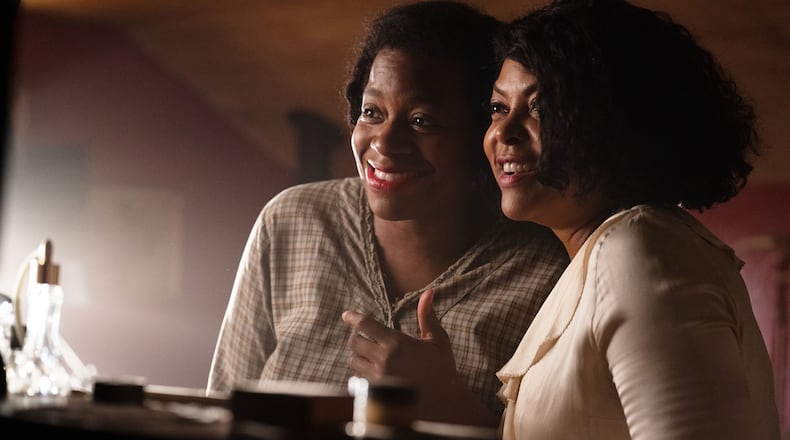Taraji P. Henson is an award-winning actress and one of the stars in the recently released, Georgia-filmed musical The Color Purple. This re-imagining of the classic movie raked in $18 million when it premiered on Christmas Day, making it the biggest box office opening for that holiday in more than a decade.
Henson can boast an impressive list of accomplishments. A Golden Globe award. A Screen Actor’s Guild award. An Oscar nomination.
But it wasn’t Henson’s acting prowess that made recent headlines. It was her complaints that, still, after all these years, she has to fight to be seen and heard in Hollywood.
In a December interview with Sirius XM, Henson, who plays the role of Shug Avery in The Color Purple, tearfully expressed how she has worked relentlessly for more than 20 years, only to feel as if she is starting over with each new production.
Watch
While not revealing how much she was paid for her work in the musical, she has indicated that she maxes out at the same amount, regardless of how well a production is expected to do. Despite the success of the movies she’s been in, she said, “The math ain’t mathing.” On top of that, she said, she finds herself lobbying for the kind of accommodations — drivers, dressing rooms, meals at rehearsals — routinely afforded to others in Hollywood.
She’s not alone, she said. Other Black women in the business are having similar experiences. “I’m tired of hearing my sisters say the same thing over and over. You get tired,” she said in the interview.
It might be hard to empathize with Henson or any other successful actor. She has what we consider a glamorous and lucrative career in which only 2% of the population makes a living. A recent magazine story detailed her home remodel with its luxurious upgrades, including an infrared sauna and a Japanese soaking tub. To many, this illustrates that Henson is breathing rarified air. Stepping in high cotton. Some of those people may wonder why she’s complaining.
But here’s the thing: We all know there’s a gender wage gap. Women earn 82 cents for every dollar a man earns. For Black women, it drops to about 65 cents. For Hispanic women, it’s more like 60 cents.
These gaps have held steady for more than 20 years, despite strides in addressing some of the presumed underlying reasons for the gap, such as educational attainment, occupational choices and family structure.
But, even when looking at people with comparable backgrounds, education, industries and occupations, the wage gap still exists. This is when the conversation turns to discrimination.
Women are more likely than men (61% compared to 37%) to say a major reason for the wage gap is that employers treat women differently, according to data from the Pew Center.
It’s hard to find a solution to the problem if men — who are often the ones wielding power — don’t believe it exists.
And again, Henson’s lament was about more than her insufficient pay. She was talking about something bigger than money: the persistent devaluation of Black women.
“When Black women speak, no one listens. And I’m not making this up,” she said in an interview with The New York Times.
Some are quick to point out that Oprah Winfrey was one of the producers of The Color Purple. But both Winfrey and Henson confirmed that Winfrey did everything she could to right the wrongs Henson says she experienced.
“I’m not in charge of the budget because that’s Warners Bros, that’s the way the studio system works, and we as producers, everybody gets their salary that’s negotiated by your team,” Winfrey told the Los Angeles Times.
This is yet another example of why we need more women in positions of power, women who not only have the insight to understand what others of their gender are experiencing but also have the compassion and desire to advocate on their behalf.
For those of us outside of Hollywood, we can keep waiting for market forces to right decades of wrongs — or we can support policies that call for the kind of pay transparency laws that have helped reduce pay gaps in countries like Canada. We can also advocate for laws that hold corporations accountable when they fall short.
Researchers should more deeply explore the reasons for the unexplained pay gap by examining women’s workplace experiences through the lens of both gender and race. And the federal government could offer additional insight by creating a new Glass Ceiling Commission, a reboot of the original commission that spanned 1991 to 1995, and assessed how well we are doing at improving women’s earnings and advancements.
If we eliminate the wage gap for Black and brown women, then it no longer exists for anyone.
We could be dismissive when celebrities like Henson talk about how a very real structural problem impacts their lives. But really, what we should do is listen.
Read more on the Real Life blog (www.ajc.com/opinion/real-life-blog/) and find Nedra on Facebook (www.facebook.com/AJCRealLifeColumn) and Twitter (@nrhoneajc) or email her at nedra.rhone@ajc.com.
About the Author
Keep Reading
The Latest
Featured



